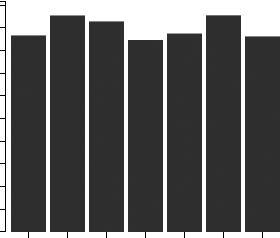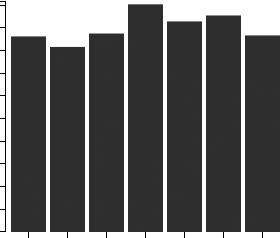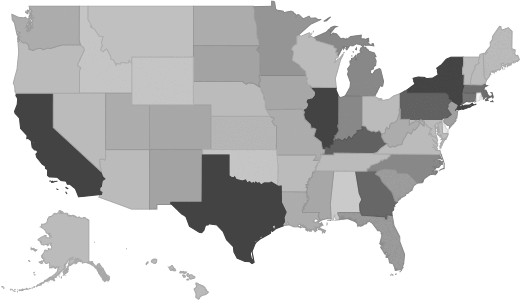All Other Miscellaneous Textile Product Mills - Market Size, Financial Statistics, Industry Trends
Industry Overview
This U.S. industry comprises establishments primarily engaged in manufacturing textile products (except carpets and rugs; curtains and linens; textile bags and canvas products; rope, cordage, and twine; and tire cords and tire fabrics) from purchased materials. These establishments may further embellish the textile products they manufacture with decorative stitching. Establishments primarily engaged in adding decorative stitching such as embroidery or other art needlework on textile products, including apparel, on a contract or fee basis for the trade, are included in this industry. Illustrative Examples: Batts and batting (except nonwoven fabrics) manufacturing Embroidering on textile products or apparel for the trade Fishing nets made from purchased materials Carpet cutting and binding Sleeping bags manufacturing Diapers (except disposable) made from purchased materials Textile fire hoses made from purchased materials Dust cloths made from purchased fabric Weatherstripping made from purchased textiles Cross-References. Establishments primarily engaged in--Source: U.S. Census Bureau
All Other Miscellaneous Textile Product Mills Market Size
This report includes historical and forecasted market sizes and industry trends for All Other Miscellaneous Textile Product Mills. It reveals overall market dynamics from 2020 through the present, and predicts industry growth or shrinkage through 2030. Revenue data include both public and private companies in the All Other Miscellaneous Textile Product Mills industry.| Historical | Forecasted | ||||||||||
|---|---|---|---|---|---|---|---|---|---|---|---|
| 2020 | 2021 | 2022 | 2023 | 2024 | 2025 | 2026 | 2027 | 2028 | 2029 | 2030 | |
| Market Size (Total Revenue) | Included in Report |
||||||||||
| % Growth Rate | |||||||||||
| Number of Companies | |||||||||||
| Total Employees | |||||||||||
| Average Revenue per Company | |||||||||||
| Average Employees per Company | |||||||||||
Industry Revenue ($ Billions)

Industry Forecast ($ Billions)

Pell Research's advanced econometric models forecast five years of industry growth based on short- and long-term trend analysis. Market size statistics include revenue generated from all products and services sold within the All Other Miscellaneous Textile Product Mills industry.
Geographic Breakdown by U.S. State
All Other Miscellaneous Textile Product Mills market share by state pinpoints local opportunities based on regional revenue statistics. Growth rate for each state is affected by regional economic conditions. Data by state can be used to locate profitable and nonprofitable locations for All Other Miscellaneous Textile Product Mills companies in the United States.Industry Revenue by State [Sample]

Distribution by Company Size
| Company Size | All Industries | All Other Miscellaneous Textile Product Mills |
|---|---|---|
| Small Business (< 5 Employees) | Included |
|
| Small Business (5 - 20) | ||
| Midsized Business (20 - 100) | ||
| Large Business (100 - 500) | ||
| Enterprise (> 500) | ||
Industry Income Statement (Average Financial Metrics)
Financial statement analysis determines averages for the following industry forces:- Cost of goods sold
- Compensation of officers
- Salaries and wages
- Employee benefit programs
- Rent paid
- Advertising and marketing budgets
The report includes a traditional income statement from an "average" All Other Miscellaneous Textile Product Mills company (both public and private companies are included).
| Industry Average | Percent of Sales | |
|---|---|---|
| Total Revenue | Included |
|
| Operating Revenue | ||
| Cost of Goods Sold (COGS) | ||
| Gross Profit | ||
| Operating Expenses | ||
| Operating Income | ||
| Non-Operating Income | ||
| Earnings Before Interest and Taxes (EBIT) | ||
| Interest Expense | ||
| Earnings Before Taxes | ||
| Income Tax | ||
| Net Profit | ||
Average Income Statement

Cost of Goods Sold
Salaries, Wages, and Benefits
Rent
Advertising
Depreciation and Amortization
Officer Compensation
Net Income
Financial Ratio Analysis
Financial ratios allow a company's performance to be compared against that of its peers.| Financial Ratio | Industry Average |
|---|---|
| Profitability Ratios | Included |
| Profit Margin | |
| ROE | |
| ROA | |
| Liquidity Ratios | |
| Current Ratio | |
| Quick Ratio | |
| Activity Ratios | |
| Average Collection Period | |
| Asset Turnover Ratio | |
| Receivables Turnover Ratio | |
| Inventory Conversion Ratio |
Products and Services Mix
Product lines and services in the All Other Miscellaneous Textile Product Mills industry accounting for the largest revenue sources.| Product Description | Description | Revenue ($ Millions) |
|
|---|---|---|---|
All other miscellaneous textile product mills |
Included |
||
Recovered fibers, processed mill waste and related products |
|||
Paddings and upholstery filling, batting, and wadding |
|||
Pads, automotive, except foam rubber and plastics |
|||
Pads/upholstry filling/batting/wadding-excl.auto & foam/plastic |
|||
Paddings and upholstery filling, batting, and wadding, nsk |
|||
Embroideries (excl.Schiffli) & embroidery contractors |
|||
Trimmings and findings, other types |
|||
Trimmings, nonapparel, including furniture, except automotive |
|||
Bias binding, apparel & notion trade, exc. fused/sealed edge |
|||
Compensation and Salary Surveys
Salary information for employees working in the All Other Miscellaneous Textile Product Mills industry.| Title | Percent of Workforce | Bottom Quartile | Average (Median) Salary | Upper Quartile |
|---|---|---|---|---|
| Management Occupations | 4% |
Included |
||
| Chief Executives | 0% | |||
| General and Operations Managers | 3% | |||
| Sales and Related Occupations | 6% | |||
| Office and Administrative Support Occupations | 13% | |||
| Production Occupations | 62% | |||
| Textile, Apparel, and Furnishings Workers | 44% | |||
| Sewing Machine Operators | 32% | |||
| Sewing Machine Operators | 32% | |||
| Textile Machine Setters, Operators, and Tenders | 7% | |||
| Other Production Occupations | 5% | |||
Government Contracts
The federal government spent an annual total of $86,627,539 on the All Other Miscellaneous Textile Product Mills industry. It has awarded 1,364 contracts to 334 companies, with an average value of $259,364 per company.Top Companies in All Other Miscellaneous Textile Product Mills and Adjacent Industries
| Company | Address | Revenue ($ Millions) |
|---|---|---|
Included |
||
